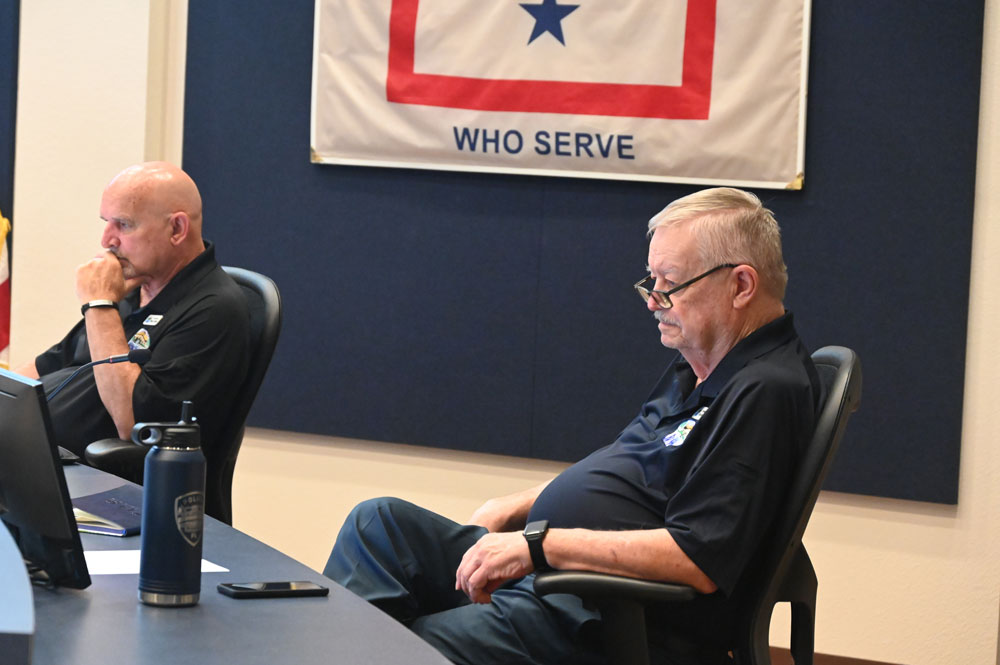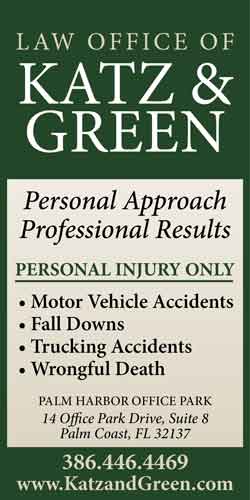
Despite the increasingly disproportionate influence of Grand Reserve, the city’s largest subdivision, the Bunnell City Commission this week narrowly rejected a proposal to ask voters in a referendum whether they’d favor adopting voting districts to even out electoral representation across the city. But the matter may soon return before the commission.
The 3-2 majority opposing the proposal included two commissioners–David Atkinson and Dean Sechrist–who live in Grand Reserve. If districts were in effect, only one of them could serve on the commission.
Similarly, Commissioners Pete Young and John Rogers, who are neighbors, could not both serve if district representation were implemented. Young, citing fears that people who don’t really live in their district might run, joined the majority. Rogers voted with Mayor Catherine Robinson to seek a referendum.
“We looked at this about what, 10 years ago or so, and we kicked it down the can,” Rogers said, “We kicked it. This is the third time, and I believe that that’s what the citizens want, and sometimes you’ve got to give the citizens what they want. It doesn’t cost nothing to put it on the ballot. Not that much. The big money is the mapping, but that doesn’t happen until it gets passed.”
“I do think that the districting is the better course of action,” Sechrist said. “However, at this time, I think Bunnell is just too small to do that.” He said growth over the next 10 to 15 years would make districting more feasible. Atkinson prefers to wait until 2030 census data before districting is considered.
Rogers said nothing stopped the commission from delay districting until 2030 or 2031, even if it went to referendum in 2026, as long as the referendum clarifies that, though the city attorney said “it would be unusual to do that.”
The city administration and the city attorney did not encourage districts, raising the nebulous potential of litigation once the districts are drawn, citing cost and other details, even though three local governments redistrict every 10 years and have never been sued over the size or makeup of districts.
Gary Masten, who chairs the city’s planning board, said three years ago, when he chaired the city’s charter review commission, the city attorney “gave a very eloquent speech about why Bunnell was not ready for districting.” The commission voted 7-1 against recommending districts.
On the other hand, former Commissioner Bonita Robinson, a Hymon Circle resident in South Bunnell, a neighborhood currently without representation on the commission, served on a charter review commission a decade ago, when she urged that districts be adopted. She had done so again earlier this month, as had Savannah Brinkworth of County Road 140.
Several members of the public who addressed the commission favored districting.
Young, the deciding vote, said he wouldn’t mind bringing back the issue for a vote in the future. But he wants more facts first. “There’s a lot more to it now than we try to rush into it,” he said. So he voted against. The issue may yet come back to the commission, but it’s unclear when or how.
“I’m not sure this is a dead issue. Things come back,” the mayor said, asking for research to be turned in, and for whatever the city attorney said at the charter review commission be included in that research. “It may be something, once this research is done and the questions are answered, that this board may feel more inclined to go that route,” Robinson said.
The commission last Monday invited Supervisor of Elections Kaiti Lenhart to give a briefing on the subject.
Grand Reserve grew only over the past several years. It is to have 847 single-family houses when completed. The majority of its households did not figure in the 2000 census. It accounts for the overwhelming share of Bunnell’s population increase from 3,000 a decade ago to 4,224 today, shifting the political gravitational center of the city its way. Bunnell has 2,475 registered voters.
Under current rules, every member of the commission could be elected from Grand Reserve–or from any one street in the city: the mayor, too, is a neighbor of Rogers’s.
Districts could be either single-member or at large, meaning that a district could elect its own representative, with voters from other districts not eligible to cast a vote for that particular candidate, or the representative could be elected by voters across the city, while the representative would still be answerable to that particular district. Either way, the key is that the representative must live in that district.
Single-member districts are rare. At-large districts are common. Palm Coast, the county and the school board have at-large districts. Flagler Beach has no districts.
Single-member districts raise the cost of elections, as different ballots have to be printed. “You’re looking at a very small amount of voters and higher potential for recounts,” Lenhart said. “Also, you’ll have reduced eligibility for your candidates.”
That’s the approach Rogers favored. The candidates would not have to campaign in “the whole city,” he said. “They go to their neighborhoods, whatever neighborhoods they’re picked and the people know who to hold accountable.” That would reduce the typical eligible voting population to about 600 per district, and if turnout ratios hold, a mere 110 people would vote in each district, deciding each election by a handful of votes.
Voter turnout in Bunnell has historically been poor. It was 18 percent in the last two contested elections. It was 29 percent in 2020 only because the city held its election in tandem with the presidential primary.
Turnout is low because the city holds its elections in March instead of holding them according to general election schedules. Palm Coast had a similarly dismal turnout until the city changed its electoral cycle to even years, matching general and midterm elections. Turnout jumped. Bunnell is resisting that switch, claiming that its March elections keep local attention on local matters. More demonstrably, March elections depress turnout. Flagler Beach does likewise.
At-large districts, Lenhart said, are “a better option.” They accomplish the same goal as single-member districts–giving each district its own representative–without the electoral complications or reduced representation. The city can establish residency requirements to ensure, for example, that a candidate has lived in a district for so many months or years to gain eligibility to run.
Some cities mix single-member and at-large districts. Gainesville has a seven-member commission. Two of its members are elected at large. Four are elected in their district. The mayor is elected at-large.
To establish voting districts, Bunnell voters would have to approve an amendment to the charter in a referendum by simple majority. That proposal could have been on the March 3, 2026 city election ballot. If it passed (with a subsequent referendum having to approve further details in the process), the earliest the districts would be in play would be in the 2028 election, since there is no scheduled election in Bunnell in 2027. Meanwhile, the city would have to hire professionals to draw the district boundaries based on city population. The commission would adopt the districts by ordinance.





























Court says
Why is the SOE giving her opinion on what’s best for the city? Young and Rogers don’t want to compete against each other in a race. What a complete collapse of government in Bunnell. SAD
FlaglerLive says
The SEO specified that she was not attempting to sway the commission, but only to provide perspective based on her experience in these matters, which is much more vast than all the commissioners combined.
Duane says
This is a Charter issue!
Ed says
If & when the new westward expansion project gets built out Bunnell will lose all local control to whatever northerners move in because between this new development and Grand Reserve the local vote will be the minority